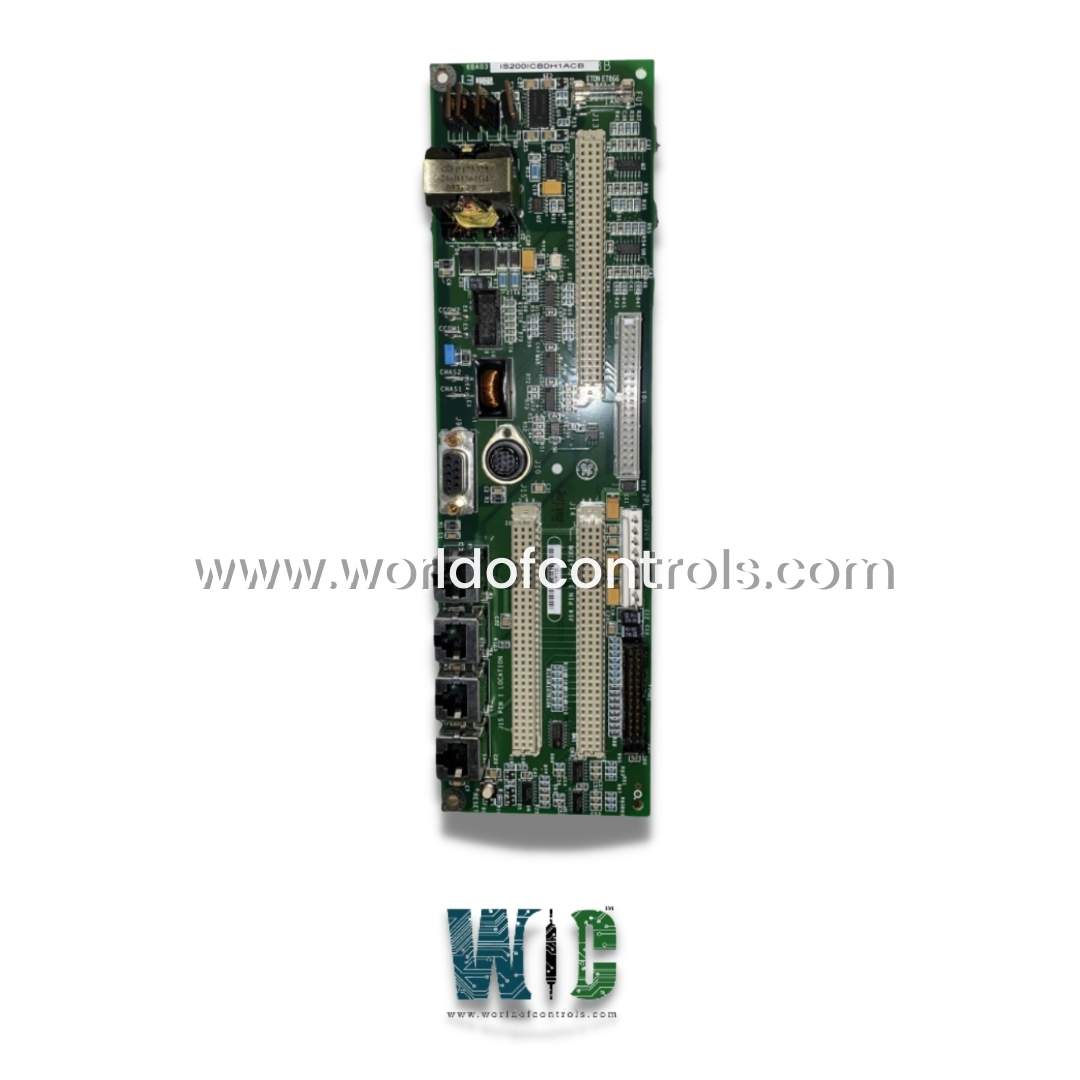
World Of Controls understands the criticality of your requirement and works towards reducing the lead time as much as possible.
IS200ICBDH1A - Control Base Card is available in stock which ships the same day.
IS200ICBDH1A - Control Base Card comes in UNUSED as well as REBUILT condition.
To avail our best deals for IS200ICBDH1A - Control Base Card, contact us and we will get back to you within 24 hours.
SPECIFICATIONS:
Part Number: IS200ICBDH1A
Manufacturer: General Electric
Series: EX2100
Function: Control Base Card
Ethernet jacks: J12A, J12B, J11A, and J11B
Connectors: CHAS 1, CHAS2, CCOM 2, and CCOM1
Repair: 3-5 Days
Product type: PCB
Availability: In Stock
Manual: GEH-6632
Country of Manufacture: United States (USA)
FUNCTIONAL DESCRIPTION:
IS200ICBDH1A is a Control Base Card manufactured and designed by General Electric as part of the Mark Vl Series used in GE Excitation Control Systems. The GE Energy EX2100 Excitation Control System is a cutting-edge platform for generator excitation. This control card is specifically designed to enhance the functionality and performance of the excitation system, ensuring reliable and efficient operation of generator excitation processes. The excitation Control System is an advanced and sophisticated platform used for controlling and regulating generator excitation. In addition to the Control Base Card, the excitation system comprises various components such as transformers, multiple controllers, power bridges, and a protection module. This comprehensive system is engineered to deliver optimal performance and precise control over generator excitation.
FEATURES:
WOC has the largest stock of GE Excitation Control System Replacement Parts. We can also repair your faulty boards. WORLD OF CONTROLS can also supply unused and rebuilt backed-up with a warranty. Our team of experts is available round the clock to support your OEM needs. Our team of experts at WOC is happy to assist you with any of your automation requirements. For pricing and availability on any parts and repairs, kindly get in touch with our team by phone or email.
What is the primary function of the board?
The primary function of the ICBD is to connect the basic input and output to the exciter within the control system and handle the majority of the EX2100e system I/O interfaces.
What are the types of inputs and outputs available on the board?
It has a variety of inputs and outputs, including four jack connectors (J11A, J11B, J12A, and J12B), two female backplane connectors, four stab-on connectors, and four vertical male pin connectors.
What can be configured and loaded into the control system using the toolbox?
Control blocks and diagrams can be configured and loaded into the control system using the toolbox.